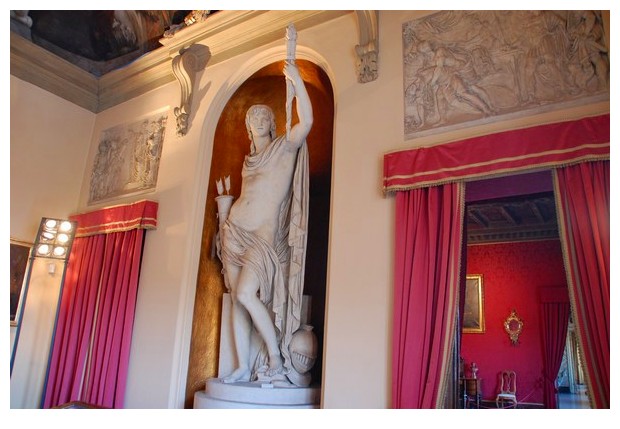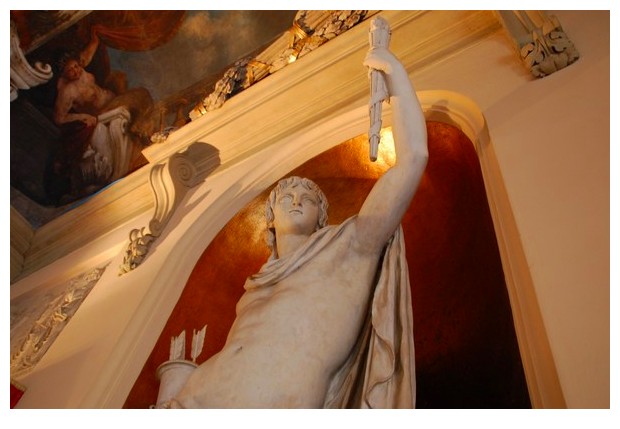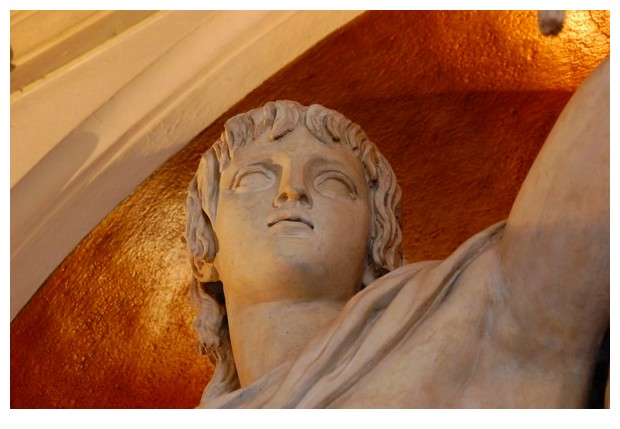


Bologna, Italy: This statue of "Genius" is by eighteenth century sculptor of Bologna, Giacomo de Maria and can be seen at Munciple Art collection museum. Giving human form to abstract concepts seems like an old tradition in Italian art. In this statue, genius is seen as a male chacteristic, with the light of knowledge and the arrows of curiosity. He doesn't have a bow, as these arrows do not need that, and to underline the futility of war, a helmet is shown at his feet.
बोलोनिया, इटलीः बुद्धि की यह मूर्ति बोलोनिया के अठाहरवीं सदी के शिल्पकार जाकोमो दे मारिया ने बनायी और शहर के नगरपालिका पुरातन कला संग्राहलय में देखी जा सकती है. अमूर्त विचारों को शिल्प में मानव आकृति देने की इतालवी शिल्प में परम्परा सी रही है. इस मूर्ति में बुद्धि को नवयुवक के रूप में देखा गया है, यानि उसे पुरुष गुण माना गया है, उसके बायें हाथ में ज्ञान की मशाल है और कमर पर जिज्ञासा के बाण हैं, लेकिन धनुष नहीं है, शायद इस लिए की इन बाणों को चलाने के लिए उसकी कोई आवश्यकता नहीं. युवक के पाँव के पास रखा मस्तक कवच भी युद्ध को त्यागने का संदेश देता है.
Bologna, Italia: Questa statua del Genio è un lavoro di Giacomo de Maria, uno scultore bolognese del diciottesimo secolo. La statua è esposta al museo delle collezioni comunali d'arte in Piazza Maggiore. Dare forma umana ai concetti astratti sembra una tradizione italiana. Il genio è visto come una virtù maschile. Penso che il fuoco nella sua mano sinistra rappresenta conoscenza mentre le frecce sono la curiosità. Lui non ha bisogno dell'arco perché frecce non ne hanno bisogno e per sottolineare la futilità della guerra, c'è il casco ai suoi piedi.
***
हमारे यहाँ यह सरस्वती के थोड़े व्यापक रूप में है. शेष सुन्दर शिल्प. प्रतिकों का सुन्दर उपयोग हुआ है.
ReplyDelete